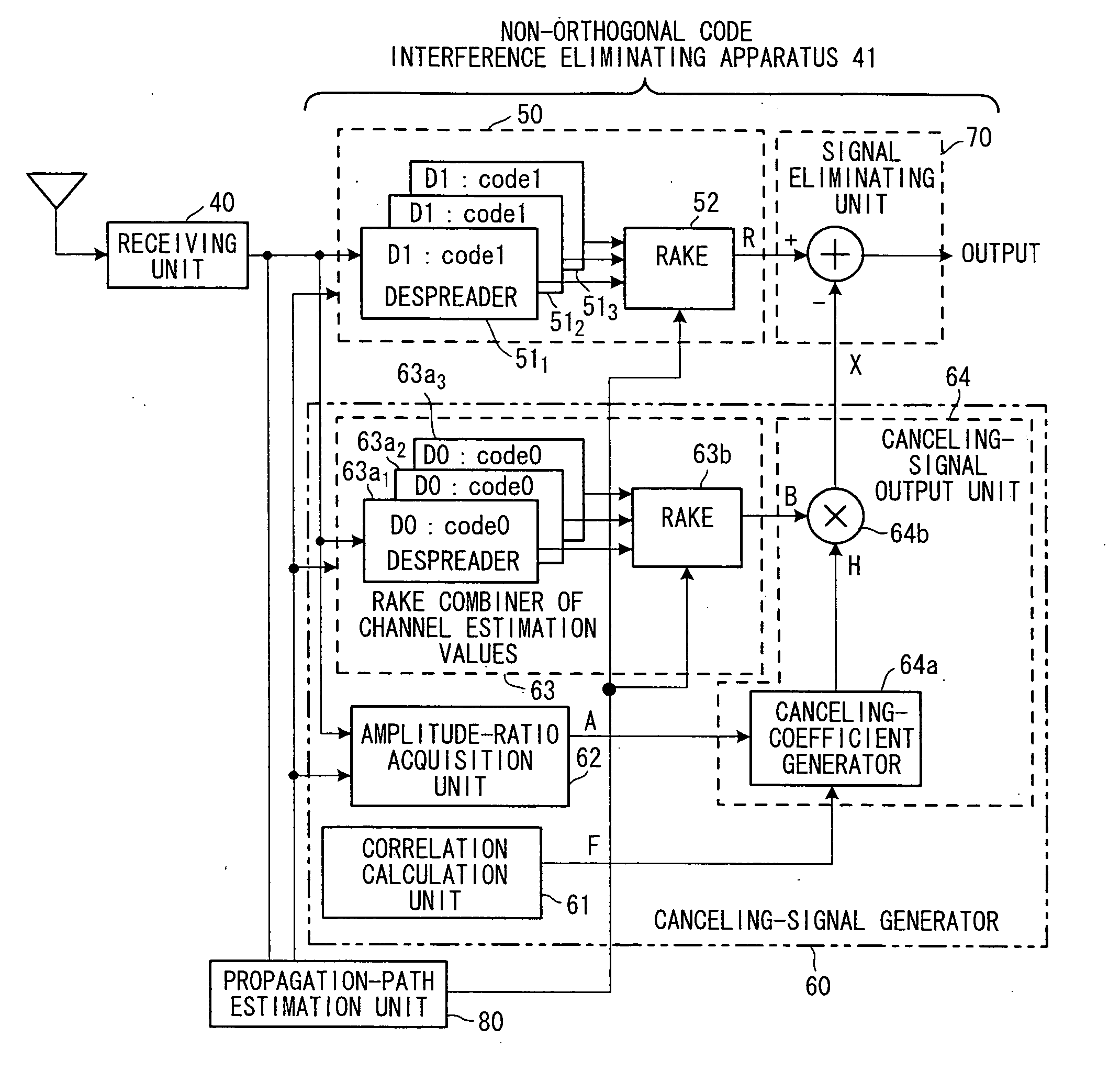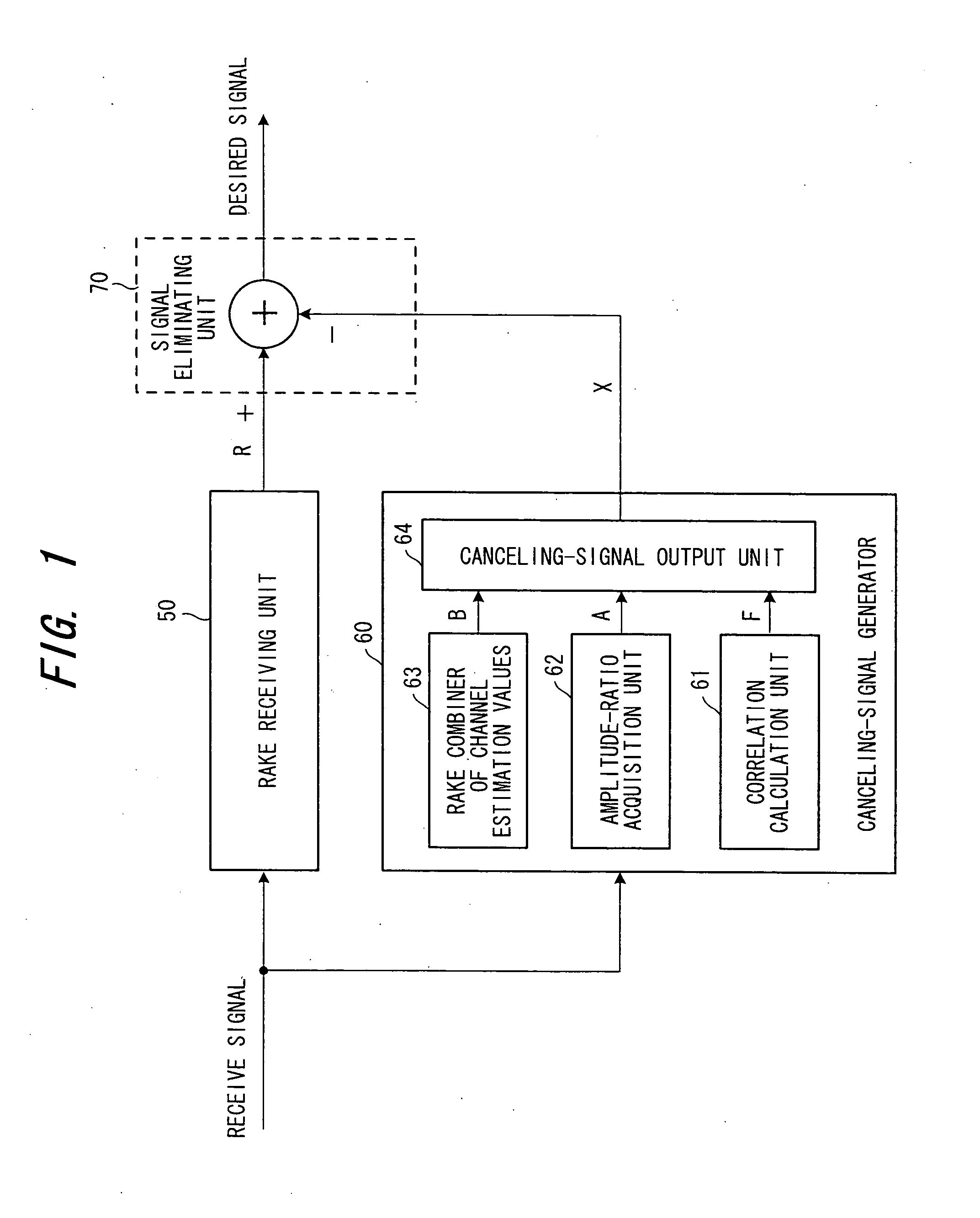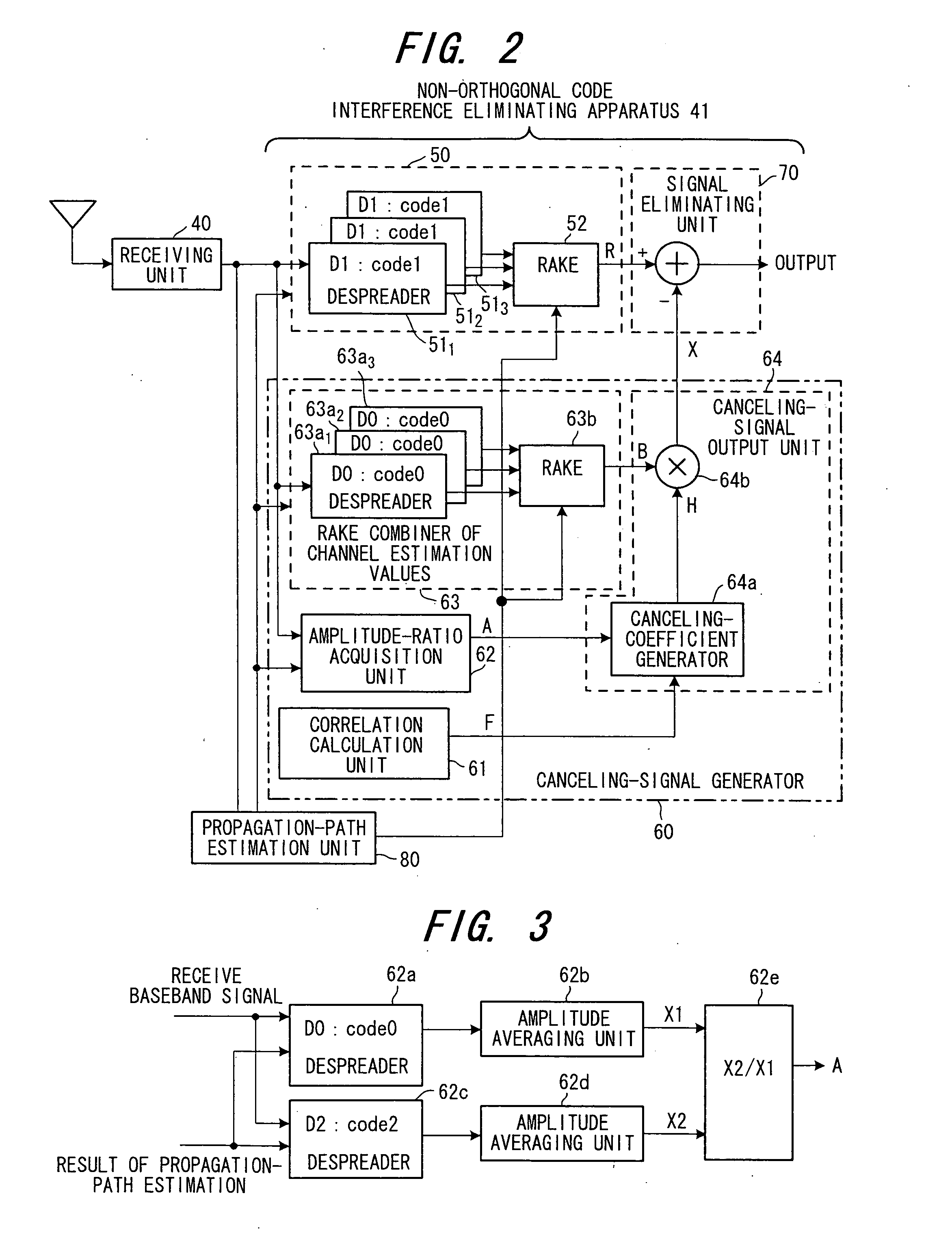Interference eliminating apparatus and method
a technology of interference elimination and apparatus, applied in the direction of electrical equipment, multiplex communication, transmission, etc., can solve the problems of interference, decline in system throughput, and signal spread by orthogonal codes,
- Summary
- Abstract
- Description
- Claims
- Application Information
AI Technical Summary
Benefits of technology
Problems solved by technology
Method used
Image
Examples
Embodiment Construction
[0049] (A) Overview of the Present Invention
[0050]FIG. 1 is a block diagram illustrating a non-orthogonal code interference eliminating apparatus in a CDMA radio receiver according to an embodiment of the present invention.
[0051] The interference eliminating apparatus includes a RAKE receiving unit 50 for despreading and RAKE-combining a receive signal by a spreading code code1 of a desired signal; a canceling-signal generator 60 for generating an undesired signal component, which is contained in the received signal, as a canceling signal; and a signal eliminating unit 70 for subtracting the canceling signal (undesired signal component) from the RAKE-combined signal and outputting a desired signal.
[0052] The canceling-signal generator 60 includes a correlation calculation unit 61 for calculating a correlation value between the spreading code code1 that spreads the desired signal and a non-orthogonal code code2, which is a code that is not orthogonal to the spreading code, for spr...
PUM
 Login to View More
Login to View More Abstract
Description
Claims
Application Information
 Login to View More
Login to View More - R&D
- Intellectual Property
- Life Sciences
- Materials
- Tech Scout
- Unparalleled Data Quality
- Higher Quality Content
- 60% Fewer Hallucinations
Browse by: Latest US Patents, China's latest patents, Technical Efficacy Thesaurus, Application Domain, Technology Topic, Popular Technical Reports.
© 2025 PatSnap. All rights reserved.Legal|Privacy policy|Modern Slavery Act Transparency Statement|Sitemap|About US| Contact US: help@patsnap.com



